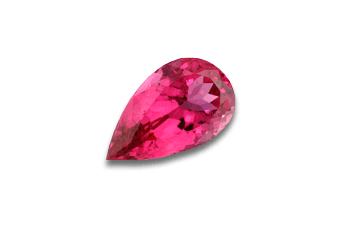TOURMALINE
Tourmaline is a group of related gem species with an extremely variable composition. The variable elements affect color, creating potentially every spectral shade. Several colors may even be seen in the same gem crystal. Shades in the pink to red category are caused by manganese or titanium. If the color is redder, it may be called rubellite, likening this variety of tourmaline to ruby. The word "tourmaline" comes from the Singhalese language (spoken in Sri Lanka) and means "mixed precious gems." Its main sources are Brazil and Afghanistan but it's been mined in Burma, India, Pakistan, Sri Lanka, Kenya, Madagascar, Mozambique, Nigeria, Tanzania, Russia and the United States. In addition to color variation, cutters of tourmaline must keep in mind the gem's dichroic nature. Dichroic gems may present different colors when viewed in different directions. Tourmaline dichroism is seen as a variation in light to dark. So a light pink gem, if properly cut, would look darker face up. A more intense pink color may also be achieved through irradiation. Another interesting pair of properties possessed by tourmaline are pyroelectricity and piezoelectricity. An electric charge is created with application of heat or pressure respectively.

Although tourmaline is reasonably hard, at 7 to 7.5 on the Moh's hardness scale, it has a fair toughness and is somewhat susceptible to thermal shock. Therefore, the use of ultrasonic or steam cleaners would not be advisable. Strong heat may also alter the gem's color. Despite these durability considerations, tourmaline is a beautiful family of gems. The pink variety has been chosen as the October birthstone, along with opal, and the 8th wedding anniversary gem.

